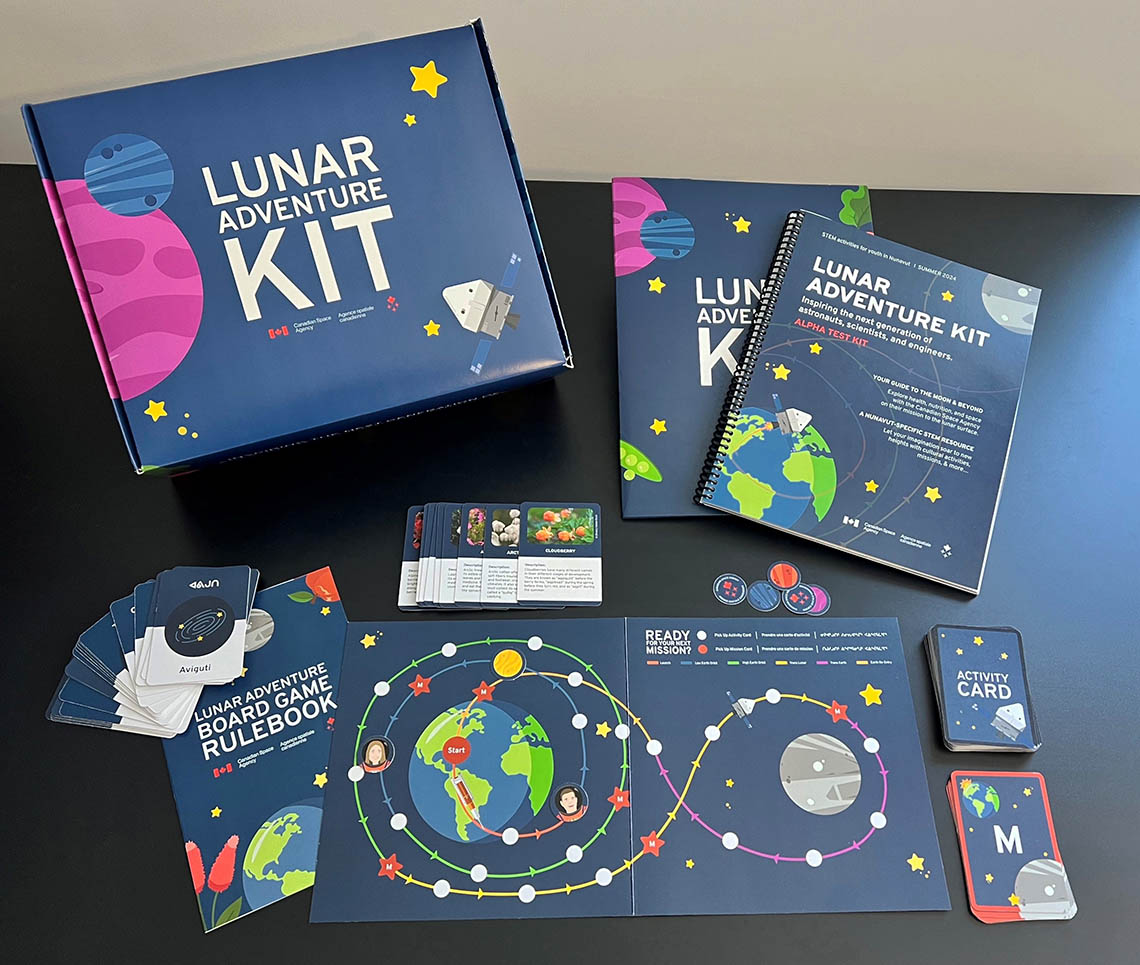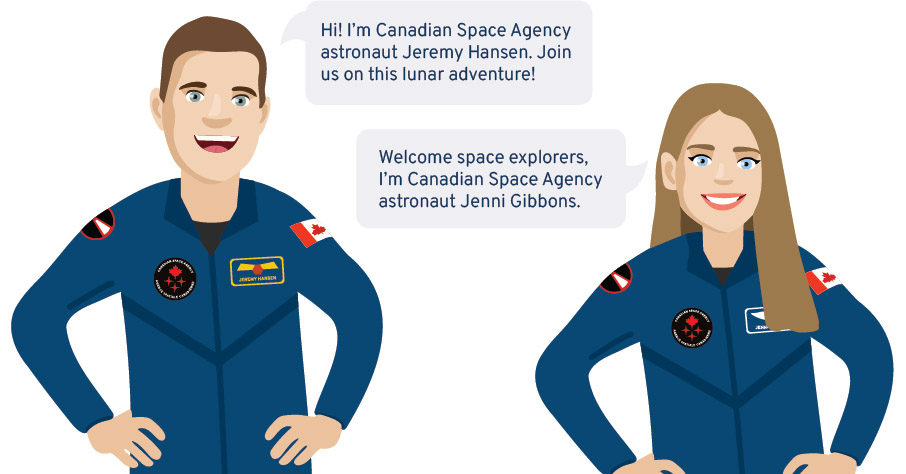Nunavut youth learn about growing food at home and in space

Two Nunavut students harvested mountain sorrel, or sweet leaves, outside the Iqaluit Maker Space. (Credit: CSA)
Space has the power to spark curiosity and big dreams. As part of its mandate, the Canadian Space Agency (CSA) uses space to inspire young Canadians and encourage them to study science, technology, engineering and mathematics (STEM). With the objective of giving equal access to space to all young Canadians, regardless of where they are from, the CSA collaborated with Nunabox and Inuit communities to create a learning resource for Inuit youth in grades 1 to 9, residing in Nunavut. The CSA consulted with communities to co-develop something that was culturally relevant to them and would meet their needs. The result? The Lunar Adventure Kit.

The Lunar Adventure Kit. (Credit: CSA)
The Lunar Adventure Kit: for and by Inuit communities
This game-based activity box offers a unique approach to learning by blending Western science concepts with local Inuit knowledge and cultural principles. It includes content on nutrition, lunar missions and activities focused on both mental and physical wellness. Inuit youth are encouraged to explore local flora and learn about food preparation guided by seasons and lunar cycles. They are also invited to imagine themselves in future roles - either as Inuk astronauts eating foods connected to home while in space or growing them in their communities on Earth.
Nearly 500 kits were delivered in fall to those that helped co-develop the resource: eight Nunavut communities and an Ottawa-based group serving Inuit youth with low school participation. The kits are now being used in a variety of settings, including Nunavut schools, libraries, and community centres. They are also being explored at home, in camps, and during pedagogical days, STEM clubs and after-school sessions.
While the kit was designed to be used in the classroom, it also enables youth to engage independently with gameplay, experiments, and reading comprehension exercises.

Avatars of CSA astronauts Jeremy Hansen and Jenni Gibbons are featured in the content. (Credit: CSA)
Text version
Hi! I'm CSA astronaut Jeremy Hansen. Join us on this lunar adventure!
Welcome space explorers. I'm CSA astronaut Jenni Gibbons.
A positive response from Nunavut schools
Many schools expressed appreciation for the kits as they often lack science resources, particularly culturally relevant materials. Activities incorporating storytelling, facilitating intergenerational learning and connecting youth with Elders were especially appreciated since they align with community goals and interests. Practical skills, such as growing and harvesting plants, were also viewed as crucial for raising awareness about healthy food production and wellness in youth.
The kits were seen as a valuable addition to their educational tools and a much-needed enhancement to their STEM offerings, especially in under-resourced schools and communities.
The CSA recognizes the importance of Indigenous Peoples and traditional knowledge. Co-developing the Lunar Adventure Kit with Inuit communities was a great learning opportunity for the CSA, and we sincerely thank the many Elders, educators, parents and youth who worked with us to connect Western science and Inuit realities.
Our deepest appreciation and thanks to the following communities and organizations for their precious time, knowledge and feedback.
- Coral Harbour
- Gjoa Haven
- Inuuqatigiit Centre for Inuit Children, Youth and Families (Ottawa)
- Naujaat
- Nunabox
- Pangnirtung
- Pond Inlet
- Rankin Inlet
- Resolute Bay
- Sanikiluaq
- Whale Cove